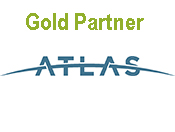Review of 2016 NOAFs Involving the Response Action Performance Standard, Historic Fill, and Nature & ExtentBy: Wesley ED. Stimpson, LSP, Loss Prevention Committee and LSPA Past President Annually, the LSPA's Loss Prevention Committee (LPC) reviews the previous year's Notice of Audit Findings (NOAFs) from MassDEP. This year the LPC downloaded FY2016 audit and enforcement notices from MassDEP’s eDEP file viewer. These materials included Level 1 and Level 2 NOAFs, Notices of Noncompliance (NONs), Administrative Consent Orders, and Administrative Consent Orders with Penalties. In all, over 500 files were downloaded and screened with filtering software. Each file was then assigned to at least one of several categories of concern. A summary of MassDEP findings, observations, and practice tips are presented below for these specific categories of concern. As part of the LSPA Loss Prevention Committee’s review of the FY ’16 Notices of Audit Findings (NOAFs), this article describes the results of our reviews of audit findings with Notices of Noncompliance (NONs) addressing the Response Action Performance Standard, Historic Fill, and Nature and Extent of oil and/or hazardous material (OHM). Response Action Performance Standard (RAPS) The RAPS requirements at 310 CMR 40.0191(2) include (a) a consideration of relevant policies and guidelines, (b) the use of accurate and up-to-date methods, practices, and technologies, and (c) the use of scientifically defensible investigative practices. Of three NOAFs citing RAPS, all three cited, among other requirements of RAPS, the failure to include “relevant policies and guidance” in developing the approach to evaluating disposal sites – and in particular, those addressing the assessment of potential indoor air exposures. At one site, possible contamination sources were not removed prior to obtaining air quality data. At the other two sites, an inadequate amount of indoor air sampling was performed to assess temporal variability. Historic Fill Of the three NOAFs addressing Historic Fill, one site outcome was recorded as a Permanent Solution with No Conditions. If the presence of Historic Fill is used to exclude OHMs from the Risk Characterization, a Permanent Solution with Conditions is required. The other two NOAFs were for sites with Response Action Outcome (RAO) Statements filed before the 2014 changes were made to the MCP creating Historic Fill. That said, one NOAF demonstrated MassDEP’s requirement for a clear determination of the source of contamination in the fill; in this case, MassDEP indicated that historic site uses as potential sources of the fill contamination had not been ruled out. The remaining NOAF contained an excellent MassDEP presentation of its current position on documentation needs for claiming Historic Fill is present, despite the RAO having been filed in 2012 and the NOAF having been issued prior to the 2016 draft Historic Fill guidance. The NOAF used the term “urban fill” where current guidance would use “Historic Fill.” It is important to note that none of the three filings depicted the boundary of the fill material. Nature and Extent (N&E) Of the nine NOAFs addressing N&E, one Permanent Solution did not fully evaluate possible sources of a release of tetrachloroethene (PCE) where former dry cleaning machines once operated. Photoionization detector data were used instead of laboratory data to eliminate possible vapor intrusion considerations, and the overall site characterization was considered insufficient by MassDEP. For a second site, the contamination extended off the property, but the disposal site boundary was delineated only on the property of the Responsible Party; moreover, the RAO did not include a justification for removing an elevated concentration of lead from the Risk Characterization data set. In third NOAF, 70 percent of the disposal site included in the Permanent Solution was not assessed or remediated. And in a fourth NOAF, MassDEP expressed a similar concern about an unassessed portion of the disposal site; this NOAF also found that the Representativeness Evaluation and Data Usability Assessment (REDUA) conclusions were not supported by the data, and that no Conceptual Site Model was provided. For one site with a Permanent Solution, on-site groundwater and soil contamination at one monitoring well was attributed to overland flow from an off-site source, and this contamination was not addressed in the Permanent Solution. MassDEP objected to this exclusion, and further noted that contaminants from the overland flow might have impacted soil and groundwater elsewhere on the site, for which no testing had been performed. Because contaminants from the suspected off-site source were not included in the Risk Characterization and the possible source was presumably not controlled, the conclusions used to support the Permanent Solution were not valid. Work at a complicated site with an RAO for a release of PCE from a former dry cleaner did not determine potential impacts to indoor air at downgradient homes and did not demonstrate that all sources of hazardous material had been adequately eliminated or controlled. MassDEP stated the evaluation should have included, at a minimum, determining groundwater flow direction in the bedrock aquifer, evaluating the regional bedrock fracture orientation, calculating the vertical gradient between the bedrock aquifer and overburden aquifer, and evaluating the hydraulic relationship between groundwater and surface water to determine if groundwater with chlorinated volatile organic compounds (CVOCs) above MCP Method 1 GW-2 Standards was discharging to the shallow overburden aquifer near area residences. In addition, the Risk Characterization relied solely on results from a single sampling event to conclude that the concentrations of CVOCs in indoor air represented a level of No Significant Risk. Finally, MassDEP indicated that it considered the groundwater data set inadequate to evaluate a historic trend of increasing concentrations at downgradient well locations. Four of the NOAFs addressed various MCP filings for different releases in the same general medical complex made at different times by different LSPs. The complex was being expanded and renovated, and various reportable conditions were discovered and addressed independently of each other. In addition, the city was undertaking infrastructure improvements and identified reportable conditions. Parties were unaware of, and in violation of, an Activity and Use Limitation that controlled construction work. MassDEP objected to response actions that only addressed immediate areas of concern and not the ‘big picture’ in a way that would best support the proposed redevelopment. MassDEP required more cooperation among the parties involved and the development of an overall program designed to address compliance with the requirements of the MCP in advance of construction. |

































